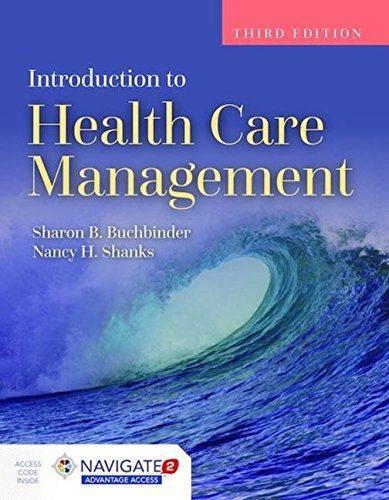Question
ASSESSMENT 1 BRIEF Objective of the task The purpose of this task is to demonstrate your knowledge of how to use commercial kitchen equipment to
ASSESSMENT 1 BRIEF | |
Objective of the task | The purpose of this task is to demonstrate your knowledge of how to use commercial kitchen equipment to prepare a range of different food types with very little and under close supervision. It also requires students to demonstrate knowledge of a range of cookery methods while preparing dishes. |
Resources | Learner Guide PowerPoint Slides Computer Internet Recipes and online presentations |
ASSIGNMENT
NOTE: Please complete the following tasks using the same table format.
TASK 1. Culinary characteristics and ingredients of special, lifestyle, medical, allergen, cultural and religious diets.
Complete the following table by providing a brief description of each diet or regime, the health or other implications of failing to address the special dietary requirement, and at least one suitable adjustment, replacement or substitute ingredient.
| Characteristic/ ingredient | Description | Health/other implications of failing to address special requirements | Adjustment/ replacement/ substitute ingredient |
|---|---|---|---|
| Special lifestyle diets | |||
Lacto ovo | |||
Vegetarian | |||
Vegan | |||
Pescatarian | |||
Low or no fat | |||
High or low carbohydrate | |||
High or low protein | |||
| Fad diets | |||
Paleo | |||
Raw | |||
Ketogenic | |||
Macrobiotics | |||
Flexitarian | |||
| Special medical diets | |||
Type one and two diabetes | |||
Gluten-free | |||
Dairy-free | |||
FODMAPs | |||
Modified texture | |||
Low or no salt | | ||
| Food allergens | |||
Peanuts | |||
Tree nuts | |||
Eggs | |||
Cow's milk | |||
Fish | |||
Crustacea | |||
Sesame seeds | |||
Soy or soybeans | |||
Cereals (or grains) | |||
Lupin | |||
Sulphites | |||
| Special religious diets | |||
Halal | |||
Hindu | |||
Kosher |
TASK 2. Food allergies, food intolerances and cultural and religious dietary sanctions
Complete the following table by providing a brief definition of each of the following terms and providing two examples of each.
Term | Definition | Examples |
|---|---|---|
Food allergy | ||
Food intolerance | ||
Religious dietary sanctions |
TASK 3. Key health and legal consequences of failing to address special requirements
Complete the following table by providing at least one health and one legal consequence of the following scenarios.
Scenario type | Scenario | Possible consequences |
|---|---|---|
Allergic reaction | A customer orders coffee and cake in a bistro during a busy weekend lunch service. At the time of ordering, they clearly state that they have an allergy to eggs and egg products and check that the cake they are ordering is egg-free as advertised on the menu. The waiter assures the customer that it is. When the waiter takes the order through to the kitchen, they are careful to communicate to the kitchen staff that the customer has an egg allergy and they write the allergy carefully on the docket. However, when the cake is served, a sauce containing egg protein is added to the plate and it is served to the customer. The customer suffers an allergic reaction requiring hospitalisation. | Health consequences Legal consequences |
Anaphylaxis | A resident in an aged care facility has a known allergy to tree nuts causing anaphylaxis. The allergy is clearly recorded in the resident's medical records, in meal plans and as required by all the legislation. However, there is a change to an ingredient in one of the sauces used in a standard recipe which is not picked up when stock is delivered. The resident unfortunately consumes a tiny amount of the sauce, suffers an anaphylactic reaction and passes away as a result. | Health consequences Legal consequences |
Food intolerance | A person with a food intolerance to lactose is eating at a new restaurant. They forget to advise the staff about their dietary issue and, when the meal is brought to the table, they notice that it has been topped with cheese. The addition of cheese wasn't described on the menu. They then advise the staff they have a lactose intolerance and ask them to return the dish to the kitchen and prepare a new one. When the dish comes back to the table, the waiter assumes that it is safe for them to eat. The next day, they suffer dietary symptoms similar to having eaten lactose and the only thing that they can put it down to is the meal that they had in the new restaurant. When they contact the restaurant, they discover that the cheese was removed from the top of the dish and the same dish was re-served. The restaurant advises the customer that there may have been some cheese throughout the dish as well. | Health consequences Legal consequences |
TASK 4. Basic principles and practices of nutrition
Complete the following table for the seven nutrient groups and provide at least two examples of sources.
Nutrient group | Definition | Examples |
|---|---|---|
Vitamins | ||
Minerals | ||
Fibre | ||
Carbohydrates | ||
Fats | ||
Protein | ||
Water |
TASK 5. Australian Dietary Guidelines
Complete the following table by providing a brief summary of each of the five guidelines included in the current Australian Dietary Guidelines. Ensure that you use your own words. Include a source for your information.
Guideline | Summary | Source/s |
|---|---|---|
Guideline 1 | ||
Guideline 2 | ||
Guideline 3 | ||
Guideline 4 | ||
Guideline 5 |
Step by Step Solution
There are 3 Steps involved in it
Step: 1

Get Instant Access to Expert-Tailored Solutions
See step-by-step solutions with expert insights and AI powered tools for academic success
Step: 2

Step: 3

Ace Your Homework with AI
Get the answers you need in no time with our AI-driven, step-by-step assistance
Get Started


